R&B: Rhythmic, soulful, blues-influenced music
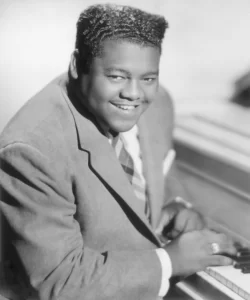
Fats Domino
Fats Domino had a major influence on rock and roll with his smooth, rolling piano style and warm, rhythmic vocals that blended rhythm and blues with boogie-woogie. His 1949 hit “The Fat Man” is considered one of the first rock and roll records, paving the way for the genre’s rise. Domino’s relaxed delivery and infectious beat influenced early rock pioneers like Elvis Presley and Jerry Lee Lewis. He brought a sense of fun and soul to the music, helping to make it popular across racial lines. With hits like “Blueberry Hill” and “Ain’t That a Shame,” he helped shape the sound and spirit of early rock and roll. His success also showed the music industry that African American artists could top the charts and attract wide audiences.
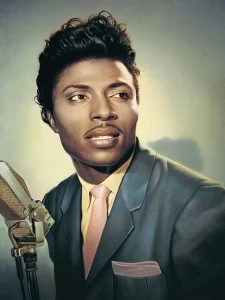
Little Richard
Little Richard brought explosive energy, flamboyant style, and wild piano playing to rock and roll, helping to define its rebellious spirit. His shouting vocals, fast tempos, and pounding rhythms in songs like “Tutti Frutti” and “Long Tall Sally” set a new standard for intensity and excitement in popular music. He influenced countless rock legends, including Elvis Presley, The Beatles, and Jimi Hendrix. Little Richard also broke barriers with his bold stage presence, challenging traditional norms of gender and performance. His dynamic performances made rock and roll louder, faster, and more thrilling. Overall, he helped turn rock into a cultural movement, not just a musical style.
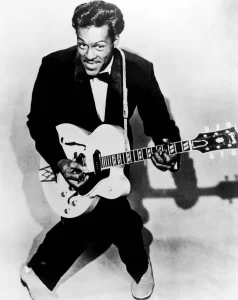
Chuck Berry
Chuck Berry was a key architect of rock and roll, blending rhythm and blues with clever lyrics and signature guitar riffs that shaped the genre’s sound. His songs like “Johnny B. Goode” and “Roll Over Beethoven” featured storytelling, teen themes, and a driving beat that became rock staples. Berry’s guitar style, especially his use of double stops and showy solos, influenced generations of rock guitarists, including Keith Richards and George Harrison. He also brought a sense of showmanship to rock with his famous duck walk and energetic performances. His ability to connect with both black and white audiences helped rock and roll cross cultural boundaries. Overall, Chuck Berry gave rock its attitude, its swagger, and its guitar-driven identity.
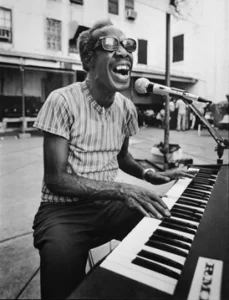
Professor Longhair
Professor Longhair deeply influenced rock and roll with his unique blend of New Orleans blues, rhumba, and boogie-woogie piano rhythms. His syncopated, rolling piano style laid the groundwork for the New Orleans sound that would shape early rock and roll. Songs like “Tipitina” and “Go to the Mardi Gras” showcased his playful, percussive technique and helped bridge the gap between rhythm and blues and rock. He inspired many musicians, including Fats Domino, Dr. John, and Allen Toussaint, who carried his style into mainstream rock. Professor Longhair’s influence can be heard in the grooves and rhythms that defined the early rock era. His music brought a joyful, danceable energy that became a key ingredient in rock and roll’s evolution.
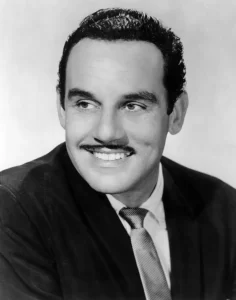
Johnny Otis
Johnny Otis, often called the “Godfather of Rhythm and Blues,” played a major role in shaping rock and roll by discovering and promoting key artists who would influence the genre. As a bandleader, producer, and songwriter, he blended R&B, gospel, and jump blues into a sound that laid the foundation for early rock. He helped launch the careers of stars like Etta James, Big Mama Thornton, and Jackie Wilson. His hit songs, like “Willie and the Hand Jive,” brought a rhythmic, danceable style that crossed over into rock and roll territory. Otis also helped integrate audiences and bands during a time of racial segregation, making rock and roll more inclusive. Through his music, mentorship, and vision, Johnny Otis helped shape the sound and spirit of early rock and roll.
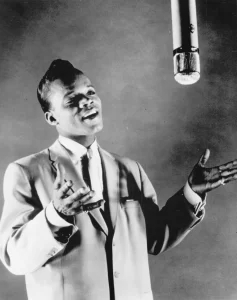
Hank Ballard
Hank Ballard was a key figure in the transition from rhythm and blues to rock and roll, known for his raw vocal style and energetic performances. He and his group, The Midnighters, released edgy, danceable hits like “Work with Me Annie,” which pushed lyrical boundaries and appealed to young audiences. Ballard also wrote and originally recorded “The Twist,” a song that became a rock and roll phenomenon when Chubby Checker’s version sparked a nationwide dance craze. His music combined rhythm, blues, and suggestive lyrics, helping to shape the rebellious image of early rock. Ballard’s influence can be heard in the way rock embraced bold themes and dance-driven beats. He helped pave the way for rock and roll’s popularity in both Black and white communities.

Ruth Brown
Ruth Brown, known as “Miss Rhythm,” played a major role in shaping the sound of rock and roll through her powerful voice and emotionally charged performances. Blending gospel, blues, and jazz, she brought a soulful intensity to rhythm and blues hits like “Mama, He Treats Your Daughter Mean” and “Teardrops from My Eyes.” Her success helped establish Atlantic Records as a major label—so much so that it was often called “The House That Ruth Built.” Brown’s style and stage presence influenced many early rock and roll singers, especially female artists. She broke barriers for women in the music industry, proving that female vocalists could be major stars. Her blend of heartfelt storytelling and upbeat rhythms became a key influence on the emerging rock and roll genre.
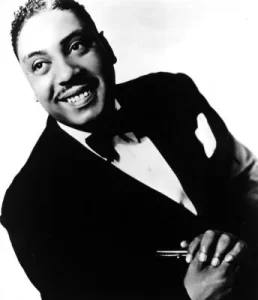
Big Joe Turner
Big Joe Turner was a powerful blues shouter whose energetic vocal style helped bridge the gap between rhythm and blues and rock and roll. His 1954 hit “Shake, Rattle and Roll” featured a driving beat, playful lyrics, and raw vocal delivery that became a blueprint for early rock music. Turner’s music brought together boogie-woogie, blues, and jump rhythms, creating a sound that was both danceable and rebellious. He influenced rock pioneers like Bill Haley and Elvis Presley, who covered his songs and adopted his energetic style. Turner’s performances were bold and full of life, helping to define the excitement that rock and roll would become known for. His deep, booming voice and infectious rhythms made him one of the key figures in rock’s evolution.
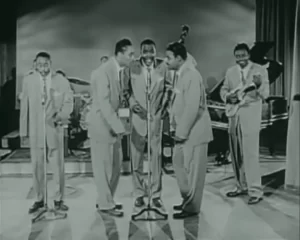
The Clovers
The Clovers were one of the most successful R&B vocal groups of the early 1950s, and their smooth harmonies and catchy rhythms helped shape the sound of early rock and roll. Their hits like “Love Potion No. 9” and “Devil or Angel” blended doo-wop, blues, and pop elements that appealed to both Black and white audiences. The group’s vocal style influenced later rock and roll acts, especially in how groups used harmony and backing vocals. The Clovers also introduced humor and teenage themes into their lyrics, which became common in rock music. Their success helped bridge R&B and rock, paving the way for other vocal groups in the rock and roll era. Their blend of rhythm, romance, and vocal charm left a lasting mark on the genre.
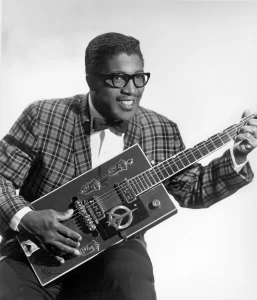
Bo Diddley
Bo Diddley had a huge impact on rock and roll with his signature rhythm—known as the “Bo Diddley beat”—a driving, syncopated pattern that became a foundation for countless rock songs. His innovative guitar work, including tremolo effects and unusual rhythms, set a new standard for rock guitarists. Songs like “Bo Diddley” and “Who Do You Love” mixed blues, African rhythms, and raw energy, creating a sound that was both primal and modern. Bo Diddley’s stage presence and homemade guitars added to his unique image and inspired many rock performers, including Buddy Holly, The Rolling Stones, and The Clash. He also brought a sense of attitude and swagger that became central to rock’s rebellious identity. Overall, Bo Diddley’s creativity and rhythm helped shape the heartbeat of rock and roll.
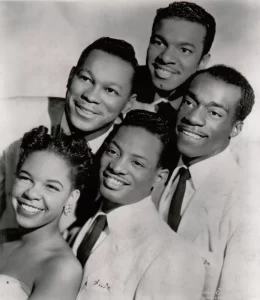
The Platters
The Platters were one of the most influential vocal groups of the 1950s, blending doo-wop harmonies with a smoother pop sound that helped shape the crossover appeal of rock and roll. Their polished vocal style and romantic ballads like “Only You” and “The Great Pretender” became staples on both R&B and pop charts. The group’s sophisticated, smooth approach influenced later rock and roll vocal groups, setting a precedent for harmony-driven, emotionally charged songs. Their success helped to integrate rock and roll, making it more accessible to mainstream audiences while still maintaining its roots in rhythm and blues. The Platters’ ability to merge the elegance of pop with the energy of rock helped pave the way for the rise of vocal harmony groups in rock and roll. Their influence can still be heard in the vocal arrangements of modern rock and pop acts.
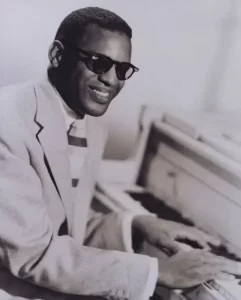
Ray Charles
Ray Charles was a pioneering force in blending gospel, blues, jazz, and R&B, which helped lay the foundation for rock and roll. His innovative approach to piano playing and his soulful, raw vocal style brought an emotional depth to rock music. Hits like “What’d I Say” and “I Got a Woman” featured a powerful combination of rhythm and gospel-inspired melodies that would influence countless rock artists, including The Beatles and Elvis Presley. Charles’ ability to fuse different genres and push musical boundaries helped break down racial barriers in the music industry, making his work essential to the evolution of rock. His energetic performances and bold, improvisational style also set the tone for the wild, free-spirited nature of rock and roll. Ray Charles’ contributions helped expand the genre beyond its early roots, making rock and roll more inclusive and dynamic.
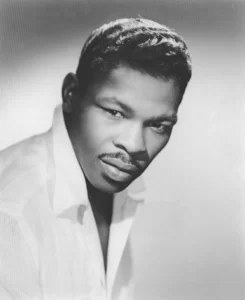
Lloyd Price
Lloyd Price was an early rock and roll pioneer whose upbeat, energetic style helped shape the genre’s sound. His 1952 hit “Lawdy Miss Clawdy” was a groundbreaking blend of rhythm and blues with the raw energy that would later define rock and roll. Price’s smooth vocals and catchy rhythms, along with his ability to appeal to both Black and white audiences, made his music widely popular and contributed to rock’s mainstream success. His influence can be seen in the crossover appeal of his music, which helped bridge the gap between R&B and rock. Price also helped define the early rock and roll ethos with his charismatic performances and bold, infectious tunes. His songs continue to inspire rock artists who blend rhythm, blues, and pop elements in their music.
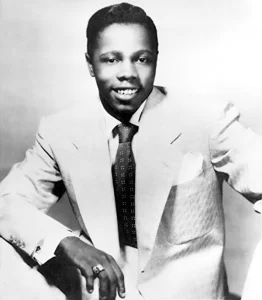
Johnny Ace
Johnny Ace was a key figure in the development of rock and roll, particularly through his smooth vocal style and his ability to blend rhythm and blues with a pop sensibility. His 1952 hit “Pledging My Love” is considered one of the first examples of R&B transitioning into rock and roll, with its emotional delivery and catchy melody. Ace’s use of romantic themes and heartfelt lyrics influenced later rock ballads, shaping the genre’s emotional depth. His tragic death in 1954 cut short a promising career, but his influence lived on through artists who admired his smooth, soulful vocals, including Elvis Presley and other early rock stars. Johnny Ace’s blend of R&B and pop helped to lay the groundwork for the emotional and musical complexity that would define much of rock and roll.

B. B. King

The Drifters
The Drifters played a key role in shaping the early sound of rock and roll with their smooth harmonies and blend of R&B, doo-wop, and pop. Their hits like “Save the Last Dance for Me” and “Under the Boardwalk” featured catchy melodies and sophisticated vocal arrangements that influenced later rock vocal groups. The Drifters’ ability to cross over between R&B and mainstream pop helped expand rock and roll’s appeal to a wider audience. Their polished, orchestrated sound also set a standard for vocal harmony groups in rock, influencing bands like The Beach Boys and The Temptations. Through their fusion of soulful emotion with pop sensibilities, The Drifters helped define the smoother side of rock and roll while maintaining its rhythmic drive. Their music remains a model for the harmony-driven, emotionally resonant elements of rock and roll.
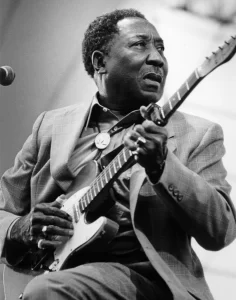
Muddy Waters
Muddy Waters is often regarded as the father of modern Chicago blues, and his influence on rock and roll is immeasurable. His electric blues sound, pioneered on hits like “Hoochie Coochie Man” and “Mannish Boy,” helped lay the groundwork for rock’s raw energy and driving rhythms. Waters’ powerful guitar riffs, passionate vocals, and use of amplified sound inspired countless rock musicians, including The Rolling Stones, Eric Clapton, and Jimmy Page. His music emphasized rhythm and power, elements that became central to rock and roll’s sound. Waters’ fusion of rural blues with urban, electrified sound bridged the gap between traditional blues and the emerging rock movement, shaping the genre’s spirit of rebellion and emotional expression